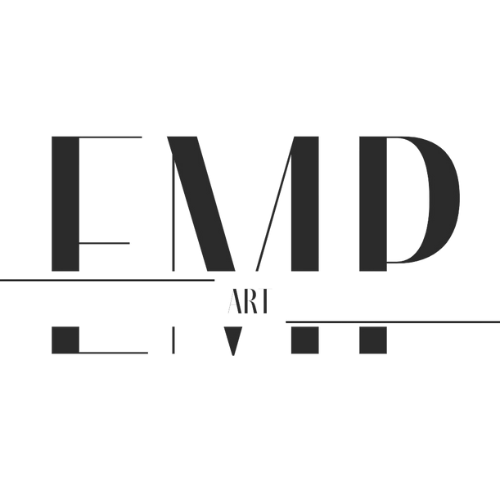How Abstract Art Mirrors the Human ExperiencE
Abstract art may not show us recognizable faces or landscapes, but it often feels more true to life than any literal image could.
Because life itself is rarely linear.
Our emotions don’t fit in neat boxes.
Our memories don’t play out in perfect detail.
Instead, life is layered, emotional, chaotic, still, confusing, beautiful — all at once.
And that’s exactly what abstract art captures.
In this blog, I’ll share why abstract art so closely mirrors the human experience, and how this insight shapes everything I create at EMP.
Life Isn’t Literal — It’s Emotional
Most of what defines being human can’t be photographed:
The ache of a goodbye
The electric calm of watching a storm roll in
The quiet warmth of belonging somewhere for the first time
These moments are not visual.
They are felt.
Abstract art meets us there — in the wordless space of emotion.
The movement of a brushstroke, the tension between colors, the softness of a texture — these become the language of emotion.
And in that language, we find ourselves.
At EMP, I often begin a painting with a feeling I can’t explain — but that feeling knows what shape and color it wants to take.
The Complexity of Layers
Human beings are layered.
We carry joy and fear at once.
We remember things we thought we forgot.
We change, evolve, loop back, and begin again.
Great abstract art doesn’t simplify this.
It honors it.
Layered paintings — with visible underpainting, ghosted forms, or emerging texture — reflect our own layered lives.
The past doesn’t disappear. It lives beneath the surface.
At EMP, I often paint over previous pieces or let early marks peek through finished works.
It’s not about erasure.
It’s about becoming — something we’re all doing all the time.
Movement, Chaos, and Stillness
Abstract art also mirrors the way we move through life.
Some days are full of motion and intensity — like Pollock’s dripping gestures.
Others feel expansive and calm — like Rothko’s quiet color fields.
Both are valid.
Both are part of being alive.
In a single painting, these states might coexist.
A still blue may sit next to a jolt of red.
A smooth surface may be interrupted by raw texture.
This dynamic tension reflects our inner world — where chaos and peace often share the same day.
Imperfection and Authenticity
Real life is not perfect.
It’s filled with cracks, contradictions, and beautiful messes.
Abstract art doesn’t pretend to be flawless.
Instead, it thrives on honesty.
It shows process.
It invites rough edges.
This rawness mirrors the vulnerability of being human — and that’s what makes it resonate.
At EMP, I don’t aim for perfection.
I aim for presence.
For truth in the moment, even if it’s incomplete.
The Viewer’s Experience is Part of the Work
Just like each of us has our own lived experience, every viewer brings something unique to an abstract piece.
What one person sees as grief, another might feel as release.
A single color might comfort one person and challenge another.
This open-ended relationship mirrors human connection:
We see through the lens of our own stories — and we’re changed by what we’re willing to engage with.
Great abstract art, like a deep conversation, meets you where you are.
And each time you return to it, it has something new to offer — because you are someone new.
How EMP Reflects the Human Experience
At EMP, my work is not meant to resolve emotions — it’s meant to hold them.
To reflect the complexity, contradiction, and beauty of what it means to live fully awake in the world.
Each piece is a mirror:
Not of the visible world, but of the felt world — the one we all carry, silently and constantly.
Whether it’s a layered canvas reflecting personal growth, or a bold gesture capturing a moment of release, every work I create is a reflection of what it means to be human.
Conclusion: Art That Knows You
We are not simple.
We are not flat.
We are not finished.
And neither is abstract art.
This is why it speaks to us.
Because it feels like us.
It is alive.
It is evolving.
It is full of feeling.
And so are we.
